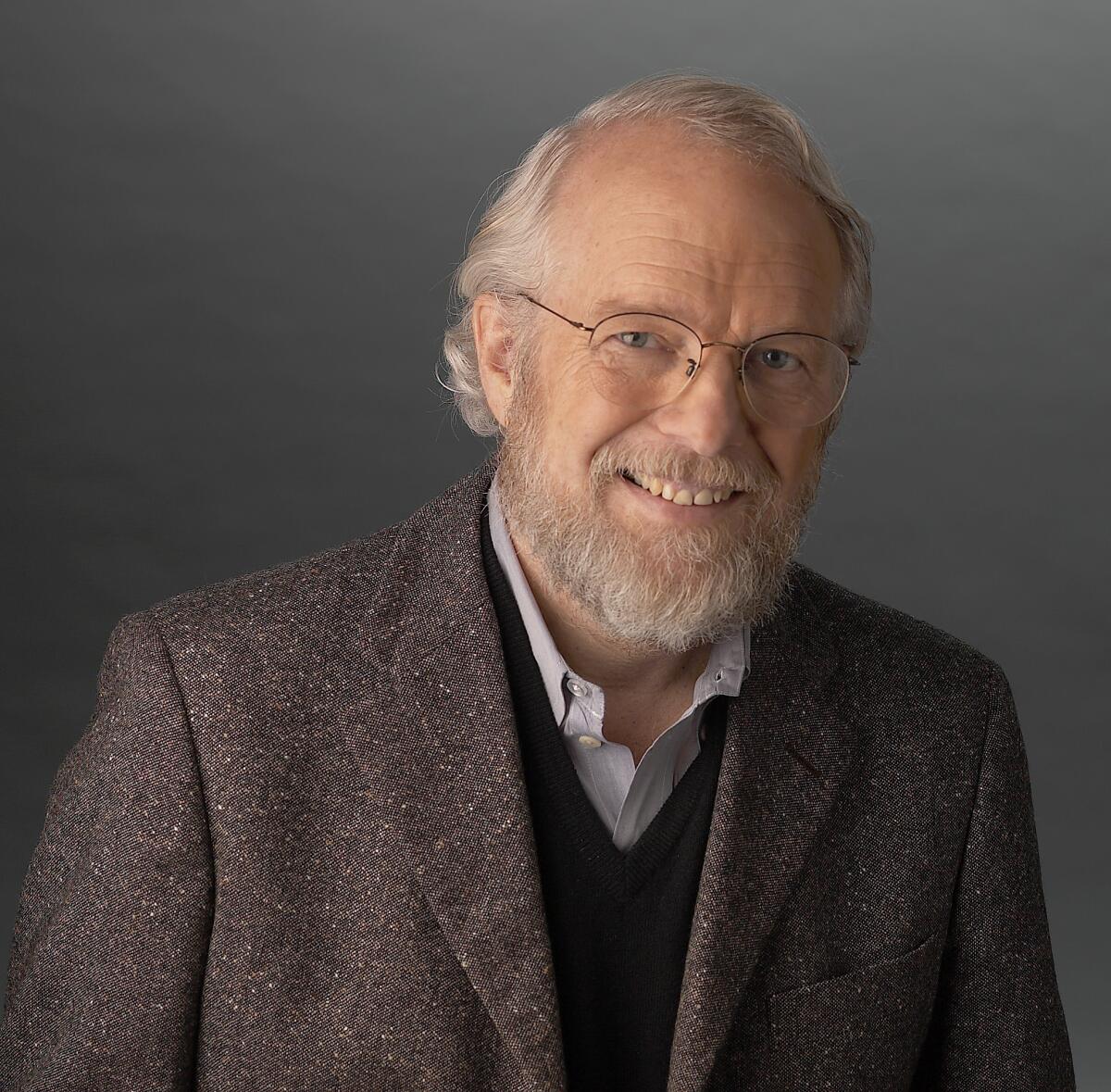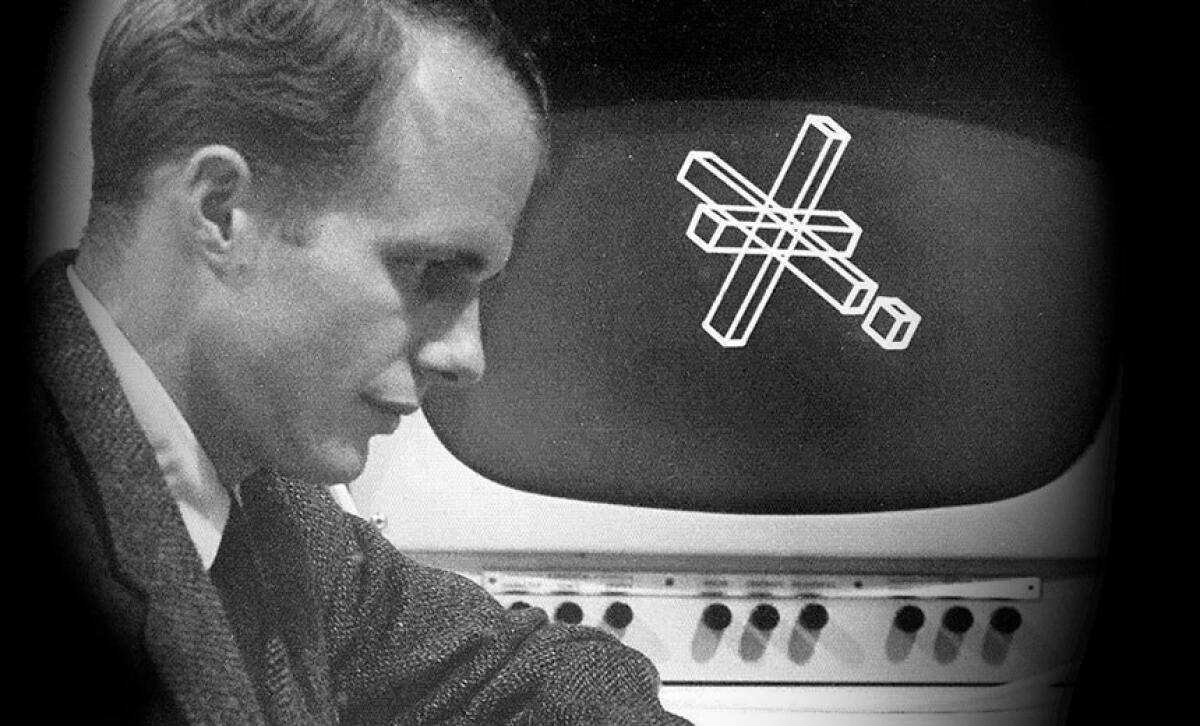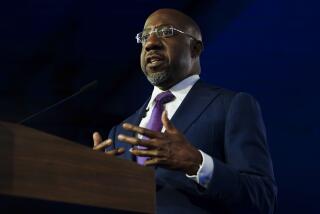Column: Farewell to John Warnock, an internet pioneer whose invention actually made the world better

- Share via
In June 1969, John E. Warnock achieved a milestone of sorts at the University of Utah by producing the shortest PhD dissertation in the university’s history.
A masterpiece of conciseness at 32 pages, the paper set forth a solution to the “hidden line problem,” which applied to how computers could draw the outline of a form partially hidden behind another — for example, part of a triangle obscured by a ball — so that all the visible sides and angles line up convincingly.
Warnock, who died Saturday, went on to become one of the leading computer scientists of his era and co-founder in 1982 of Adobe Inc.
They just sat there in the meeting with blank stares. They had no idea what I was talking about.
— John Warnock, describing the reaction of IBM executives to his desktop publishing software
For those of us tethered to the computer in our professional or personal lives, his more momentous role is that of co-inventor of the PDF, the “page description format” that allows documents to appear on screen and be printed out as their creator intended, no matter which software or hardware is used to create them.
The PDF standard revolutionized desktop publishing. It’s a required, or at least preferred, format for court filings, academic papers, consumer manuals — virtually every imaginable document in our increasingly paperless society. (“PDF” now commonly stands for “portable document format.”)
Get the latest from Michael Hiltzik
Commentary on economics and more from a Pulitzer Prize winner.
You may occasionally receive promotional content from the Los Angeles Times.
And it originated in a project code-named “Camelot” that Warnock launched at Adobe in 1991, when the company was still working to establish a comfortable niche in what was turning into an internet-connected world.
Camelot yielded another concise paper — six pages that outlined a vision for a software suite that would allow users to “capture documents from any application, send electronic versions of these documents anywhere, and view and print these documents on any machines.” The suite that followed was known as Acrobat, and its underlying format was the PDF.
Warnock’s career traces the path of the computer industry in its earliest days. In the 1960s, the University of Utah became an important center of the still-fledgling discipline of computer science — so important, indeed, that in December 1969 it was among the first four nodes (along with UCLA, UC Santa Barbara and the Menlo Park-based research firm SRI) to be interconnected by the ARPANET, the network funded by the Pentagon’s Advanced Research Projects Agency and the precursor to the internet.
Utah’s specialty was computer graphics. Among Warnock’s fellow students was Edwin Catmull, who would eventually become president of Pixar and Walt Disney Animation Studios and who created, as a student project, a short video in which his left hand was converted into a computer image, a landmark in 3-D rendering. Warnock’s PhD thesis advisors were Utah professors David Evans and Ivan Sutherland, whose company, Evans and Sutherland, produced pioneering flight simulators.
Column: Artificial intelligence chatbots are spreading fast, but hype about them is spreading faster
Will artificial intelligence make jobs obsolete and lead to humankind’s extinction? Not on your life
Warnock was a member of a generation whose work transformed ordinary life as never before. The 1970s (including a few years preceding and following that decade) were a period of extraordinary innovations.
In 1968, Douglas Engelbart of SRI staged what has gone down in history as “the mother of all demos,” introducing hyperlinks, the mouse, videoconferencing and other inventions to a rapt audience in San Francisco. ARPANET was launched in 1969.
Xerox’s Palo Alto Research Center, the legendary Xerox PARC, was established in 1970; in 1973 its first personal computer — the first personal computer — became operational, with an animated image of Sesame Street’s Cookie Monster flashing across its screen.
The IBM Personal Computer was introduced in 1981 and the Apple Macintosh, arguably the first consumer desktop computer, in 1984.

Since then, technological innovation seems to have regressed into a morass of cryptocurrency scams, new ways to invade personal privacy, and robotaxis that collide with emergency vehicles, block traffic and drive themselves into wet cement. (One notable exception: the truly life-saving development of COVID-19 vaccines in record time.)
Warnock and his longtime professional partner, Charles M. Geschke, first collaborated at Xerox PARC. As I reported in my 1999 book about PARC, “Dealers of Lightning,” there they worked to create a program to reconcile the incompatible image resolutions of computer screens and laser printers (another PARC invention).
Documents that looked perfect on the screens of PARC’s personal computer, the Alto, turned into unintelligible gibberish when printed out. That made a mockery of another PARC innovation, Bravo, a word processing system built on the principle of “what you see is what you get,” or WYSIWYG, meaning that the image on the screen could display varied fonts, boldface, shadows, even Russian cyrillic or Japanese kanji characters — and that the same features would appear on a printed page.
Warnock, Geschke and several collaborators finally invented Interpress, through which a printed document appeared exactly as it did on the screen. They then entered the hell of trying to persuade Xerox to integrate Interpress into its laser printers and other typographical products.
Publishers and authors rightly fear that they’ll lose out financially from the digitization of books; but it’s also quite possible that, properly managed, the technological revolution will make them more money.
The experience prompted them to leave Xerox, joining a vanguard of PARC scientists and engineers who carried PARC’s DNA into the outside world, frustrated at the company’s inability to market their inventions to businesses and consumers.
“We spent months traveling around to all the divisions within Xerox and back to corporate selling this idea,” Warnock would recall. Xerox eventually agreed to make Interpress a component of its entire product line, but refused to announce it until every product could be reengineered to accommodate it, a process that would take years.
Crestfallen, Geschke and Warnock told themselves, “We’ve spent two years of our lives trying to sell this thing and they’re going to put it under a black shroud for another five,” Warnock recalled. “You were seeing PCs get announced, and Apples, and it became sort of depressing.”
They left to found Adobe. After some false starts they settled on a business plan that would turn Adobe into a billion-dollar company by 1999: the development of an Interpress-like typesetting program. This became Postscript, which was first bundled into Apple printers and soon became the de facto standard for computer printing. (Geschke died in 2021; he and Warnock served as Adobe’s co-chairmen until 2017.)
Adobe became known for other aids to desktop publishing and professional imaging, notably Photoshop, which enables photographs to be altered in seemingly infinite ways. Its digital software, including Photoshop and Acrobat, its PDF-producing tool, remains the core of its business, which recorded $4.8 billion in profits on $17.6 billion in sales last year.
“I divide every disagreement into two classes,” Bob Taylor was telling me.
Acrobat was an offspring of Postscript. To Warnock’s dismay, Acrobat was an unaccountably hard sell.
“Nobody got it,” Warnock recounted. In a meeting at IBM, “I explained how it worked, what its advantages were and how, from any application, you could send a completely portable document across platforms. They just sat there in the meeting with blank stares. They had no idea what I was talking about.”
Soon, influential users did get it. “The Centers for Disease Control was one of our earliest and most fanatical adopters,” Warnock recalled. “They said, ‘Do you know how many people’s lives we can save by sending these documents out to all of the field offices?’”
Yet most people still “didn’t understand how important sending documents around electronically was going to be.... And in 1994, the world wide web hit, and then everybody said, ‘Oh, well, you can use Acrobat to send documents.’ What a concept!”
Before then, even the Adobe board had toyed with killing Acrobat. “I said, ‘There’s just no way. This is solving an important problem, and we are going to hang in there until it works.’”
More to Read
Get the latest from Michael Hiltzik
Commentary on economics and more from a Pulitzer Prize winner.
You may occasionally receive promotional content from the Los Angeles Times.













